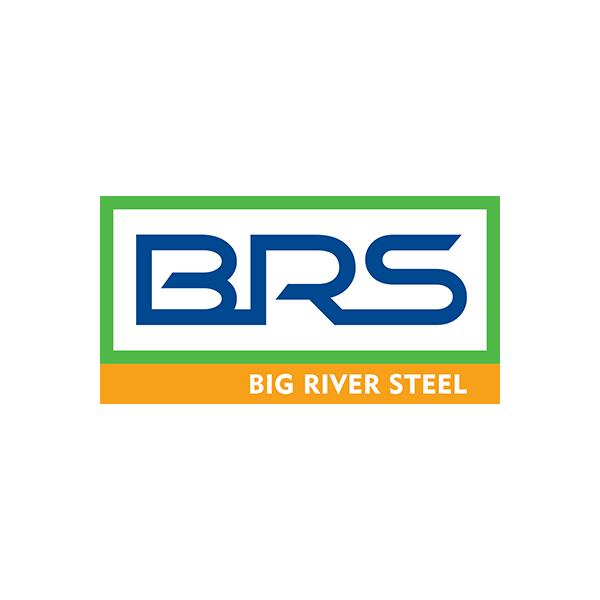Title Page
-
Client / Site
-
Conducted on
-
Prepared by
-
Location
-
Personnel
-
Add signature
-
When was the last time you were coached?
- Yes
- No
- N/A
-
This week?
-
Last week?
-
One month ago?
Tenaris Phase 2 Contractor Audit
-
General site overview and comments
General Safety and Health Provisions
-
Safety and Training Education: Is each employee instructed in the recognition and avoidance of unsafe conditions and the regulations applicable to his work environment to control or eliminate any hazards or other exposure to illness or injury? 1926.21(b)(2)
-
Are employees who are required to handle or use poisons, caustics, and other harmful substances instructed in their safe handling and use, and made aware of the potential hazards, personal hygiene, and personal protective measures? 1926.21(b)(3)
-
Are employees who are required to enter confined or enclosed spaces instructed as to the nature of the hazards involved, the necessary precautions to be taken, and in the use of protective and emergency equipment? 1926.21(b)(6)(i)
-
Housekeeping: Is form and scrap lumber with protruding nails and all other debris kept cleared from work areas, passageways, and stairs? 1926.25(a)
Occupational Health and Environmental Controls
-
Medical Services and First Aid: Where life threatening injuries could occur, is a facility for the treatment of injured employees located within three minutes of the jobsite? If not, is there an employee(s) trained in first aid at the site? 1926.50(c)
-
Sanitation: Are potable (drinking) water and adequate toilet facilities available at the jobsite? 1926.51
-
Ventilation: Does the employer ensure that concentrations of hazardous substances such as dusts, fumes, mists, vapors, or gases produced in the course of construction work does not exceed the limits specified in 1926.55(a) ? 1926.57(a)
-
Hazard Communication: Does the employer have any hazardous materials on site? If so: Does employer have a written Hazard Communication Program? 1926.59(e)(1)
-
Are employees trained in the hazards of chemicals in their work area? 1926.59(h)
Personal Protective and Life Saving Equipment
-
Head protection: Are protective helmets (hard hats) worn at all times where there is a possible danger of head injury from impact, falling or flying objects, or electrical shock and burns? 1926.100
-
Hearing protection: Are ear protection devices provided and used wherever it is not feasible to reduce noise levels or where a deviation to exposures levels specified in Table D-2, Permissible noise exposure in 1926.52 exist? 1926.101
-
Eye and Face protection: Are employees provided with and use eye and face protection when machines or operations present potential eye or face injury from physical, chemical, or radiation agents? 1926.102 Note: See Table E-1
-
Foot Protection required where rolling equipment is in use.
-
Selection, Issuance, Use and Care of Respirators: Are employers provided with and use appropriate respiratory protective devices in emergencies or when controls required by Subpart D of this part either fail or are inadequate to prevent harmful exposure? 1926.103(a)(1)
Fire Protection
-
Has a fire protection program been developed?
-
Is firefighting equipment conspicuously located? 1926.150(a)(3)
-
Is firefighting equipment periodically inspected and maintained in operating condition? 1926.150(a)(4)
-
Has an educational program to familiarize employers with the general principles of fire extinguishers use and the hazards involved been provided? 1910.150(c)(xi)
-
Is at least one portable fire extinguisher with a rating of not less than 20-B:C located within 75 feet of each pump, dispenser, underground fill pipe opening and lubrication or refueling service area? 1926.152(g)(11)
Signs, Signals and Barricades
-
Accident prevention signs and tags: Are accident prevention signs and tags visible at all times when work is being performed and/or removed or covered promptly when the hazard no longer exists? 1926.200(a)
-
Signaling: Is signaling by flaggers and the use of flaggers, including warning garments worn by flaggers, in conformance with Part vi of the MUTCD(1988 Edition, Revision 3 or the Millennium Edition) ?1926.201(a)
-
Barricades: Are barricades used for protection of workers in conformance with Part VI of the MUTCD (1988 Edition, Revision 3 or the Millennium Edition) ?1926.202
Materials Handling, Storage, Use and Disposal
-
Are materials which are stored in tiers either stacked, racked, blocked, interlocked, or otherwise secured to prevent sliding, falling, or collapse? 1926.250(a)(1)
-
Are materials stored more than 6 feet from any hoist way or inside floor opening and more than 10 feet from any exterior walls that do not extend above the top of the stored materials? 1926.250(b)(1)
-
Are materials being stored beneath power lines being moved or unloaded?
-
Are safe procedures utilized when unloading pipes?
-
Are aisles and passageways kept clear and in good repair to provide for the free and safe movement of material handling equipment? 1926.250(a)(3)
-
Rigging equipment for material handling: Do alloy steel chain slings have a permanently affixed durable identification stating size, grade, capacity, and manufacturer? 1926.251(b)(1)
-
Do any hooks, rings, oblong links, pear-shaped links, coupling links, and other attachments have a rated capacity at least that of the chain? 1926.251(b)(2) Note: Job or shop hooks and links or makeshift fasteners are not to be used 1926.251(b)(3)
-
Disposal of waste materials: Are waste materials disposed of properly? 1926.252
Tools, Hand and Power
-
General requirements: Are hand and power tools furnished by employer or employee maintained in a safe condition? 1926.300(a)
-
Are power tools, belts, gears, shafts, pulleys, sprockets, spindles, drums, fly wheels, and chains properly guarded? 1926.300(b)(1) & (2)
-
Power-operated hand tools: Are electric power operated tools equipped with proper ground or are they double insulated? 1926.302(a)
-
Are employees using foot protection when using jackhammers or tampers?
-
Have all employees who operate power actuated tools been trained in the use of the particular tool they use? 1926.302(e)(1)
-
Woodworking tools: Do all portable circular saws have a guard above the base plate and a guard below the base plate that will automatically and instantly return to the covering position when the saw is withdrawn from the work? 1926.304(d)
Welding and Cutting
-
Gas welding and cutting: When transporting or storing compressed gas cylinders, are cylinders secured and caps in place? 1926.350(a)(1)
-
Are all compressed gas cylinders secured in an upright position at all times? 1926.350(a)(9)
-
Are employees instructed in the safe use of fuel gas? 1926.350(d)
-
Are torches inspected for leaking shut off valves, hose couplings, and tip connections at the beginning of each shift? 1926.350(g)(2)
-
Arc welding and cutting: Are frames of all arc welding and cutting machines grounded? 1926.351(c)(5)
-
Are employees instructed in the safe means of arc welding and cutting? 1926.351(d)
-
Are welding and cutting operations shielded by noncombustible or flameproof screen whenever practicable? 1926.351(e)
-
Are electrodes removed and electrode holders placed or protected so they cannot make electrical contact with employees when the holders are left unattended? 1926.351(d)(1)
-
Fire prevention: Is suitable fire extinguishing equipment immediately available in the work area and ready for instant use? 1926.352(d)
-
When employees are welding, cutting, or heating in confined space, is either general mechanical ventilation, local exhaust ventilation, or airline respirators provided? 1926.353(b)(1)
-
Are pipes blanked off, and flushed etc. before any welding operations take place?
-
Is there a “Hot Work Permit” system followed by employees?
Electrical
-
Does the employer examine all electrical equipment to ensure that recognized electrical hazards (i.e. exposed live parts, splices in cords, missing ground pins, reverse polarity etc.) are identified? 1926.403(b)(1)
-
Are disconnecting means legibly marked to indicate purpose unless located so that purpose is evident? 1926.403(h)
-
Is sufficient working space provided to permit safe operation and maintenance of electrical equipment? 1926.403(i)(1)
-
Are live electrical parts guarded against accidental contact? 1926.403(i)(2)
-
Are ground fault circuit interrupters used to protect employees? 1926.404(b)(1)(i) If not, is an assured equipment grounding program in place? 1926.404(b)(1)(iii)
-
Are all 120-volt, single phase, 15- and 20-ampere receptacle outlets on construction sites, which are not a part of the permanent wiring of the building or structure and which are in use by employees, protected by a ground-fault circuit interrupter(s) GFCI? 1926.404(b)(1)(ii)
-
Are all electrical circuits and equipment grounded? Is path to ground from circuits, equipment, and enclosures permanent and continuous? 1926.404(f)(6)
-
Are exposed noncurrent carrying metal parts of cord and plug-connected equipment grounded? 1926.404(f)(7)(iv) Are electrical extension cords of the three wire type? 1926.405(a)(2)(ii)(J)
-
Are lamps for general illumination protected against breakage? 1926.405(a)(2)(ii)(E)
-
Are flexible cords and cables protected from damage? 1926.405(a)(2)(ii)(I)
-
Are conductors entering boxes, cabinets, or fittings protected from abrasion and do unused openings in cabinets, boxes, and fittings have covers? 1926.405(b)(1)
-
Wiring methods, components, and equipment for general use: Do all pull boxes, junction boxes, and fittings have covers? 1926.405(b)(2)
-
Are all cabinets, cut out boxes, fittings, boxes, panel board enclosures, switches, circuit breakers, and switchboards located in wet or damp locations enclosed in weather proof enclosures? 1926.405(e)(1) and (2)
-
Are flexible cords and cables used as a substitute for fixed wiring of a structure; run through holes in walls, ceilings, or floors; through doorways or windows; attached to building surfaces; or concealed behind walls, ceilings, or floors? 1926.405(g)(1)(iii)
-
Are fixtures and receptacles in wet or damp locations identified for that purpose and installed so that water cannot enter? 1926.405(j)(1)(v) and (j)(2)(ii)
-
Safety-related work practices: Are electrical cords or cables taken out of service when worn or frayed? 1926.416(e)(1)
-
Are contractors/subcontractors (painters) using aluminum extension handles (or ladders) around electrical power lines?
Scaffolding
-
General requirements. Capacity: Are scaffolds and scaffold components capable of supporting, without failure, its own weight and at least 4 times the maximum intended load applied or transmitted to it? 1926.451(a)
-
Scaffold platform construction: Are scaffold platforms fully planked? 1926.451(b)(1) Does the employer ensure that each platform (on all working levels of scaffolds) is fully planked or decked between the front uprights and the guardrail supports? 1926.451(b)(1)(i) and (ii)
-
Criteria for supported scaffolds: Where support scaffolds are used with a height to base width (including outrigger supports, if used) ratio of more that four to one (4:1)…does employer ensure that scaffold is restrained from tipping by guying, tying, bracing, or equivalent means? 1926.451(c)(1) and 1926.451 (c)(i-iii)
-
Criteria for suspension scaffolds: Are all suspension scaffold support devices, such as outrigger beams, cornice hooks, parapet clamps, and similar devices, resting on surfaces capable of supporting at least 4 times the load imposed on them? 1926.451(d)
-
Access: Is safe access to scaffold platforms provided to employees working on scaffolds where cross braces are not used as a means of access? 1926.451(e)(1)
-
Are hook-on, and attachable ladders positioned so that their bottom rung is not more than 24 inches (61 cm) above the scaffold supporting level? 1926.451(e)(2)(ii)
-
Are rest platforms provided at 35-foot (10.7m) maximum vertical intervals where supported scaffolds are more than 35 foot high? 1926.451(e)(2)(iii)
-
Use: Are scaffolds and scaffold components capable of supporting their maximum intended load or rated capacities, whichever is less? 1926.451(f)(1)
-
Are scaffolds inspected for visible defects by a competent person before each work shift, and after any occurrence which could affect a scaffold’s structural integrity? 1926.451(f)(3)
-
Falling object protection: In addition to wearing hard-hats, are employees provided with additional protection from falling hand tools, debris, and other small objects through the installation of toe boards, screens, or guardrail systems, or through the erection of debris nets, catch platforms or canopy structures that contain or deflect the falling objects? 1926.451(h)(1)
-
Aerial lifts: Are aerial lifts designed and constructed in conformance with the applicable requirements of American National Standards for “Vehicle Mounted Elevating and Rotating Work Platforms,” ANSI A92.2-1969, including appendix? 1926.453(a)-(b)
-
Aerial Lifts (Extensible & Articulating Boom Platforms): Are workers in aerial lifts equipped with standard guard rails also wearing fall-restraint devices connected to manufacturer suggested tie off points on the boom or basket? 1926.453(b) (2)(v)
-
Training Requirements: Are employees who perform work while on a scaffold trained by a qualified person to recognize the hazards associated with the type of scaffold being used and in the understanding of procedures to control or minimize those hazards? 1926.454(a)
-
Training requirements: Does training address the nature of electrical hazards; fall hazards; falling object hazards; procedures for dealing with electrical hazards; for erecting, maintaining, and disassembling fall protection systems; falling object protection systems; proper use of the scaffold and proper handling of materials on the scaffold; maximum intended load and load carrying capacities of scaffolds used in the work area? 1926.454(a)(1)-(5)
-
Are employees involved in erecting, disassembling, moving, operating, repairing, maintaining, or inspecting a scaffold trained by a competent person? 1926.454(b)
-
Are employees retrained where there is reason to believe that an employee lacks the skill(s) or understanding needed for safe work involving the erection, use, or dismantling of scaffolds? 1926.454(c)
Fall Protection > 6 Feet
-
General requirements: Is walking/working surface strong enough to support employees and the work to be done? 1926.501(a)(2)
-
Are employees on walking/working surfaces with unprotected sides and edges protected by guardrails, safety nets or personal fall arrest systems? 1926.501(b)(1)
-
Are employees who are constructing leading edges protected by guardrails, safety nets or personal fall arrest systems if feasible? (If not feasible, requirements of paragraph (k) of 1926.502 must be met) 1926.501(b)(2)(i)
-
Is each employee in a hoist area protected by either guardrails or personal fall arrest system? 1926.501(b)(3)
-
In hoisting areas where guardrails are used and guardrails are removed to facilitate landing of material and the employee must lean out over the edge or through the access opening, is that employee protected by a fall arrest system? 1926.501(b)(3)
-
Are employees exposed to falling through holes (including skylights) protected by fall arrest systems, guardrails or covers? 1926.501(b)(4)(i)
-
Are employees on walking/working surfaces protected from tripping or stepping into holes by covers? 1926.501(b)(4)(ii)
-
Are employees on walking/working surfaces protected from objects falling through holes by covers? 1926.(b)(4)(iii)
-
Are exposed employees working on the face of form work or reinforcing steel protected by fall arrest systems, safety nets, or positioning device systems? 1926.501(b)(5)
-
Are exposed employees working on ramps, runways or other walkways protected by guardrail systems? 1926.501(b)(6)
Cranes and Derricks
-
Are manufacturer’s specifications and limitations applicable to the operation of any and all cranes and derricks complied with? 1926.550(a)(1)
-
Are rated load capacities, recommended operating speeds, and special hazard warnings posted on all equipment and visible from operator’s station? 1926.550(a)(2)
-
Is equipment inspected by a competent person before each use? 1926.550(a)(5)
-
Are thorough annual inspections made on hoisting machinery and records of the dates and results of inspection maintained by employer? 1926.550(a)(6)
-
Are employees working within 10 feet of power lines? 1926.550(a)(15)(i-vii)
-
Are cranes or derricks only used to hoist employees on a personnel platform when conventional means are more hazardous or impossible? 1926.550(g)(2)
-
If a personnel platform is being used, are all operation criteria required by this standard being followed? 1926.550(g)(3)(i)
-
Does the crane or derrick used with a personnel platform have a boom angle indicator (if equipped with a variable angle boom), a device to indicate boom length (if equipped with telescoping boom), and an anti-two blocking device or two block damage prevention feature? 1926.550(g)(3)(ii)
-
Does the personnel platform meet all design criteria and platform specifications required by this standard? 1926.550(g)(4)
-
Material hoists, personnel hoists, and elevators: Are employees prohibited from riding on material hoist except for the purpose of inspection and maintenance? 1926.552(b)(1)(ii)
-
Are hoist way entrances protected by substantial gates or bars? 1926.552(b)(2)
-
Are hoist way door or gates on personnel hoists at least 6 feet 6 inches high? 1926.552(c)(4)
-
Are hoist way doors or gates provided with mechanical locks which cannot be operated from landing side and are accessible only to persons in car? 1926.552(c)(4)
-
Overhead hoists: Is the safe working load for overhead hoists, as determined by the manufacturer, indicated on the hoist, and that safe working load not being exceeded? 1926.554(a)(1)
-
Conveyors: Where conveyors pass over areas or aisles, have guards been provided to protect employees from falling materials? 1926.555(a)(5)
-
Are conveyors equipped with audible warning signals and is that signal sounded immediately before starting the conveyor? 1926.555(a)(1)
Motor Vehicles, Mechanized Equipment
-
Do all vehicles with an obstructed view to the rear have a backup alarm or are they always used with an observer? 1926.601(b)(4)
-
Do all vehicles have seat belts and are they used? 1926.601(b)(9)
-
Are vehicles in use inspected at the beginning of each shift to assure that all parts, equipment, and accessories affecting safety operations are free of defects? 1926.601(b)(14)
-
Material handling equipment: Are seat belts provided on all earth-moving equipment except those not equipped with ROPS and those designed for a stand up operation? 1926.602(a)(2)(i) *Note: See Rollover Protective Structures (ROPS).
-
Does all bi-directional earthmoving equipment have a horn in operable condition? 1926.602(a)(9)(i)
-
Is all earthmoving or compacting equipment with an obstructed rear view equipped with an operable backup alarm or used only with an observer? 1926.602(a)(9)(ii)
-
Are all high lift rider industrial trucks equipped with overhead guards? 1926.602(c)(1)(v)
-
Powered Industrial Trucks: Are all powered industrial truck operators trained in accordance with 1926.602(d)?
-
Are all powered industrial trucks equipped with inspection data plate or tag? Does each industrial truck possess working brakes, steering mechanisms, control mechanisms, warning devices, lights, overhead lift devices, and guards and safety devices? 1926.602(c)(1)(vi) Note: ANSI B56.1-1969 Section 702I
Excavations
-
Are all surface encumbrances that may create a hazard removed or supported as necessary to safeguard employees? 1926.651(a)
-
Have all underground utility installations been located? 1926.651(b)(1), (2), and (3)
-
In trenches more than 4 feet deep, are stairways, ladders, or ramps located so that travel to them is no more than 25 feet? 1926.651(c)(2)
-
Are employees exposed to vehicular traffic wearing warning vests made of reflectorized or high visibility material. 1926.651(d)
-
Is a warning system such as barricades, hand or mechanical signals or stop logs used when mobile equipment approaches the edge of the excavation? 1926.651(f)
-
Are testing and controls used to prevent exposure to hazardous atmospheres? 1926.651(g)
-
Are excavation or other materials kept at least 2 feet from the edge of the excavations? 1926.651(j)(2)
-
Is the excavation inspected daily and after any hazard increasing occurrence by a competent person? 1926.651(k)(1)
-
Requirements for protective systems: Are employees in an excavation 5 feet deep or more, or with the potential for cave in, protected by an adequate protective system? 1926.652(a)(1) Note: See appendices A, B, C, D, E, and F to this standard
Concrete and Masonry Construction
-
Is all protruding reinforcing steel, onto or into which employees could fall, guarded to eliminate the hazard of impalement? 1926.701(b)
-
Requirements for equipment and tools: Do powered, rotating-type concrete trowels, that are manually guided, have a control switch that automatically shuts off if operators hands are removed from handles? 1926.702(c)
-
Are respirators provided for employees who engage in sandblasting operations?
-
Are enclosed spaces adequately ventilated when using gasoline powered concrete cutters, buggies, and trowels?
-
Requirements for cast-in place concrete: Is all form work for cast-in-place concrete designed, fabricated, erected, supported, braced, and maintained so that it will support without failure all loads that may be anticipated? 1926.703(a)(1)
-
Is erected shoring equipment inspected immediately prior to, during and immediately after concrete placement? 1926.703(b)(3)
-
Requirements to precast concrete: Are precast concrete wall units, structural framing, and tilt-up wall panels supported to prevent overturning and collapse until permanent connections are made? 1926.704(a)
-
Requirements for masonry construction: Is a limited access zone established when constructing a masonry wall? 1926.706(a)
-
Are all masonry walls over eight feet in height braced or supported to prevent collapse? 1926.706(b)
Steel Erection
-
Approval to begin Steel erection: Has the controlling contractor provided in writing to the steel erector that the concrete has cured properly before steel erection begins and any repairs, replacements and modifications were conducted within accordance to 1926.755(b)? 1926.752(a)
-
Site layout: Has the controlling contractor provided and maintained adequate access roads inside the construction site; keeping them, properly graded, drained, and firm? 1926.752(c)
-
Hoisting and Rigging: Are cranes being inspected before each shift by a competent person? 1926.753(c)(1)
-
Is a Qualified Rigger inspecting the rigging prior to each shift? 1926.753(c)(2)
-
Are routes for suspended loads preplanned to ensure that no employee is required to work directly below a suspended load? 1926.753(d)(1)
-
Structural Steel Assembly: Are fully planked or decked floors or nets maintained within two stories or 30 feet, whichever is less, directly under any erection work being performed? 1926.754 (b)
-
Are roof and floor holes and openings decked over? Are metal decking holes and openings not being cut until immediately prior to being permanently filled? 1926.754(e)(2)
-
Are roof and floor opening covers designed to withstand at least twice the weight of employees, equipment , and materials that may be imposed upon it? Are they secured to prevent displacement? Are they marked with the word “HOLE” or “COVER”? 1926.754(e)(3)
-
Column Anchorage: Are all columns anchored by a minimum of four anchor bolts? 1926.755(a)
-
Systems-Engineered Metal Buildings: Are both ends of all steel joists or cold formed joists fully bolted or welded to the support structure before releasing hoisting cables, allowing employees on the joist, or allowing construction loads on the joists? 1926758(f)
-
Have perimeter safety cables been installed at the final interior and exterior perimeters of floors as soon as the metal decking is installed? 1926.760(a)(2)
-
Is each Connector protected from fall hazards of more than two stories or 30 feet above a lower level, whichever is less? Have they Completed connector training in accordance with 1926.761? Are they provided with a personnel fall arrest system at heights over 15 and up to 30 feet? 1926.760(b)
-
If a controlled decking zone is used, have all employees working in the CDZ completed CDZ training in accordance with 1926.761? 1926.760(c)(4)
-
Training: Has appropriate training been provided for all employees exposed to fall hazards? 1926.761(b)
Underground Construction
-
Underground construction: Are safe means of access and egress provided and maintained to all working places? 1926.800(b)(2)
-
Is a check-in and check-out system used that will provide positive identification of every employee underground? Is an accurate record and location of the employees kept on the surface? 1926.800©
Demolition
-
"Prior to demolition operations, was an engineering survey conducted by a competent person of the structure to determine the condition of the framing, floors, and walls, and possibility of unplanned collapse of any portion of the structure. Any adjacent structure where employees may be exposed shall also be similarly checked. Is there written evidence the survey was performed? 1926.850(g)."
-
Preparatory operations: If employees are exposed to the hazard of falling through wall openings, are the openings protected to a height of approximately 42 inches? 1926.850(g)
-
If debris is dropped through holes in the floor without chutes, is the area onto which the material is dropped completely enclosed with barricades at least 42 inches high and at least 6 feet back from the projected edge of the opening above? 1926.850(h)
-
Are all floor openings, not used as material drops, equipped with a properly secured cover that will support any load which may be imposed? 1926.850(i)
-
Are all stairs, passageways, ladders, and incidental equipment covered by this section periodically inspected and maintained in a clean safe condition? 1926.851(b)
-
Chutes: Is any area where material is dropped outside the exterior walls of the structure effectively protected? 1926.852(a)
-
Manual removal of floors: Are workers engaged in razing the steel after floor arches are removed protected by planking as required in 1926.855(b)? 1926.858(a)
-
Mechanical demolition: Are continuous inspections made by a competent person as work progresses to detect hazards from weakened or deteriorated floors or walls or loosened materials? 1926.859(g)
Blasting and Use of Explosives.
-
Are only authorized and qualified persons permitted to handle explosives 1926.900(a)
-
Are smoking, firearms, matches, open flame lamps and other fires, flame or heat producing devices, and sparks prohibited in or near explosive magazines and while explosives are being handled, transported, or used? 1296.900(b)
-
Are only authorized and qualified persons permitted to handle explosives 1926.900(a)
-
Is an inventory and use record of all explosives maintained by the employer? 1926.900(d)
Power Transmission and Distribution
-
General requirements: Are electric equipment and lines considered energized until determined to be de-energized by test or other appropriate methods or means? 1926.950(b)(2)
-
Does the employer provide training or require that his employees are knowledgeable and proficient in procedures involving emergency situations and first aid fundamentals including resuscitation or comply with 1926.50(c)? 1926.950(e)(1)
-
Tools and protective equipment: Does rubber protective equipment meet the requirements of American National Standards Institute J6 series? 1926.951(a)(2)
-
Mechanical Equipment: Are aerial lift trucks working near energized lines or equipment grounded or barricaded and considered as energized equipment or the lift truck insulated for the work being performed? 1926.952(b)(2)
-
Underground lines: When working on buried cable or a cable in manholes, is metallic sheath continuity maintained by bonding across the opening or by equivalent means? 1926.956(c)(7)
Rollover Protective Structures
-
Rollover protective structures (ROPS) for material handling equipment: Are all rubber tired, self-propelled scrapers, rubber-tired front end loaders, wheel type agricultural and industrial tractors, crawler tractors, crawler type loaders, and motor graders (with or without attachments) equipped with rollover protective structures? 1926.1000(a)(1) *Note: Not required if the above equipment was manufactured before July 1969. See Motor Vehicles, Mechanized Equipment, and Marine Operations: Material handling equipment.
Stairways and Ladders
-
Is a ladder or stairway provided at all personnel points of access where there is a break in elevation of 19 inches or more? 1926.1051(a)
-
Is there always at least one clear point of access between levels of a building or structure? 1926.1051(a)(3)&(4)
-
Stairways: Is each stairway having four or more risers or rising more than 30 inches equipped with: (a) at least one handrail; and (b) at least one stair rail system along each unprotected side or edge? 1926.1052(c)(1)
-
Are the unprotected sides and edges of stairway landings provided with a guardrail system? 1926.1052(c)(12)
-
Ladders: Are ladder rungs, cleats, and steps parallel, level, and evenly spaced when the ladder is positioned for use? 1926.1053(a)(2)
-
Does each stepladder have a metal spreader or locking device? 1926.1053(a)(8)
-
Do portable ladders used for access to an upper landing surface have side rails that extend at least 3 feet above the landing? 1926.1053(b)(1)
-
Do ladders that are used where the employee or the ladder could contact exposed energized parts have nonconductive side rails? 1926.1053(b)(12) (see 1926.951(c)(1) for exception)
-
Are ladders periodically inspected by a competent person? 1926.1053(b)(15)
-
Are portable ladders with structural defects marked as defective and withdrawn from service? 1926.1053(b)(16)
-
Training requirements: Have all employees been trained to recognize hazards related to ladders and stairways? 1926.1060(a)
Toxic and Hazardous Substances
-
Asbestos: Has a determination been made as to whether or not building contains Asbestos Containing Materials (ACM = Greater than 1% Asbestos) or Presumed Asbestos Containing Materials (PACM)? 1926.1101













